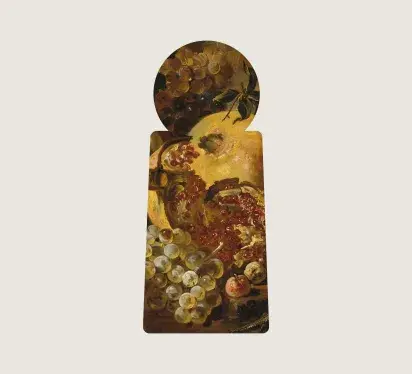Long before it became an agricultural ritual, grape harvesting was already part of the identity of different peoples, surrounded by myths, symbols and knowledge passed down from generation to generation.
Harvesting in the Neolithic
The first signs of viticulture take us back to the Neolithic period, more than 7,000 years ago, in the regions of the Caucasus and the Fertile Crescent. There, communities began to domesticate wild vines and, according to research, it was almost by chance that they discovered grape juice would ferment naturally, giving rise to an unexpected drink. That discovery marked the beginning of a long relationship between humankind and the vine.
Harvesting in Ancient Egypt
Centuries later, in Ancient Egypt, wine became a product reserved almost exclusively for pharaohs and priests. Many tombs show depictions of pruning and harvesting, proof of the symbolic importance of this process. Wine was linked to religious rituals and was especially offered to Osiris, a god associated with fertility and the renewal of life.
Harvesting in Ancient Greece
The tradition continued to grow in Ancient Greece, where grape harvesting took on an almost sacred character. According to mythology, it was Dionysus who taught humans how to cultivate vines and make wine, and every year the Dionysian festivals celebrated the grape cycle with theatre, music, and community gatherings. Harvest time thus became a central event in the Greek agricultural and social calendar.
Harvesting in Rome
Later, the Romans took viticulture to a new level. They improved cultivation, pressing, and storage techniques, and spread the vine throughout the Empire, including the Iberian Peninsula. For them, Bacchus symbolised abundance and fertility, and many festivities revolved around wine. They also organised harvest times with greater precision, leaving a mark that can still be seen in current practices.
Harvesting in the Middle Ages
After the fall of Rome, it was medieval monasteries that kept viticultural knowledge alive. Monks carefully recorded when to harvest, how to prune, and which plots gave the best results. Wine was essential for liturgy, but it also became a key economic resource. During these centuries, the harvest regained a strong communal character, becoming both shared labour and a time for people to come together.
Throughout history, the grape harvest has not only been farm work: it has been a space for human encounters, a tradition shaped by each culture, and a reflection of the relationship between people and the land.
Today, each harvest continues to remind us of that legacy. At Conde de los Andes, we keep this heritage alive with respect and with our eyes set on both history and the future, crafting wines that speak of the place where they are born and of all the generations that cared for the vine before us.

